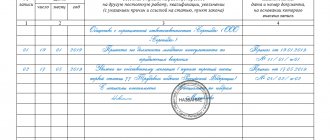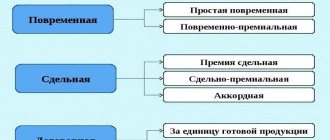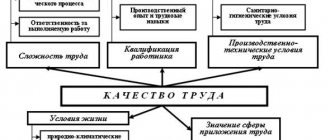When an organization or enterprise hires a new employee, both an employment contract and a hiring order must be drawn up and signed. There is a generally accepted unified form of order - T-1 and a variation T-1a.
The person responsible for drawing up and filling out the form usually becomes a personnel officer or directly the head of the organization. In the General Classifier of Management Documentation, the employment order has code 0301001 for one employee, as well as the OKUD code 0301015 for the employment form for several employees.
Documentation of employment
[ads-pc-3] [ads-mob-3]
The employment procedure consists of several stages:
- Based on the received resumes of applicants, a primary selection is carried out, those selected are invited and interviewed, in some cases - a competition, based on the results of which the applicant’s candidacy is agreed upon with the manager, if necessary, the applicant for the vacancy provides a medical report (certificate);
- the candidate gets acquainted with job responsibilities, job descriptions, working conditions and remuneration;
- contracts are concluded: labor contracts, financial liability contracts, non-disclosure of trade secrets, a job application is written;
- the personnel service issues a hiring order, which is signed by the manager;
Until 2013, the order form (form T-1) was a unified document (mandatory for use by all organizations). Now its form can be adapted to the specifics of the enterprise, without losing details, and should be enshrined in the accounting policy of the enterprise. A mandatory requirement in essence of a legal action is the exact compliance of the data specified in the order form with the contract.
Contradictions with the staffing table, shift schedule, and bonus regulations are unacceptable. In fact, by issuing an order for employment, employers comply with the requirements of Article 68 of the Labor Code of Russia, and employees, by signing, indicate their agreement with the internal regulations of the company concerning their future activities.
- the employee’s personal card is filled out in form T-2, information is submitted to the military registration desk;
- the newly hired employee provides an INN, SNILS card, documents confirming the presence of dependents to justify the personal income tax deduction;
- The accounting department, on the basis of the order, creates a personal account, and the personnel department makes an entry in the work book.
Extract from the dismissal order
The extract contains condensed information corresponding to that indicated in the main document. The employer must issue it or a copy of the order itself within three days after receiving the employee’s request. A more concise indication of the information given in the order may be required by the employee if he wants to hide confidential information. The contents of the T-8 form relate to personal data about the employee, and in the extract he has the right to ask to reflect only the information that he needs. In order not to redo the extract multiple times, allow the employee to familiarize himself with the draft document.
The extract has legal force if it contains:
- Name of the organization;
- name of the document and date of issue;
- details of the form in T-8 form;
- information that the former employee needs;
- Full name and position of the person who signed the order (the signature of the general director is not required on the extract itself).
- signature of the person certifying the extract and the inscription “Correct”.
An extract from the order or a copy of the order itself, issued to the employee, is certified by the seal of the organization or the personnel department.
Legal documents
- Resolution of the State Statistics Committee of the Russian Federation dated January 5, 2004 N 1
- N 402-ФЗ
- Art. 81 Labor Code of the Russian Federation
Order for employment sample filling
[ads-pc-3] [ads-mob-3]
A sample employment order is given in the appendix. Key points to consider:
- name of the organization - you should indicate the abbreviated or full name according to the constituent documents;
- document number - in accordance with the entry in the book of registration of orders for personnel (the index “k”, the index of a separate unit can be used, duplication of numbers is unacceptable in order to avoid entries “retroactively”), the numbering must be continuous, continuous, without gaps;
- the start date (or in the T-1a form, which is issued for a group of persons - “work period”) - corresponds to the first working day, the end date - to the last day if the contract is fixed-term (for an open-ended contract, the column remains empty);
- after the words “hire”, it is advisable to formulate the data in the form of a continuous sentence, observing cases: for example, “Hire Valentina Valerievna Plotnikova to the testing laboratory as a laboratory assistant temporarily, during the maternity leave of Veronika Olegovna Zavidova...”
- in the line “nature of work” it can be indicated: permanently, part-time, temporarily and others;
- the salary amount must coincide with the data indicated for the position in the staffing table; if during the probationary period, for example, the organization does not pay allowances or bonuses, this must be enshrined in the local regulations of the enterprise;
- it is necessary to indicate the probationary period (maximum for employees who are not civil servants - three months), the list and conditions of appointment are stipulated in Article 70 of the Labor Code, if not, put a dash in the line or indicate “without a probationary period”.
The order is endorsed by the manager or an authorized person (deputy director for personnel issues, for example) and no later than three days from the start of work must be communicated to the employee against signature. According to Article 68 of the Labor Code, the employee is provided with a certified copy of the document upon his request. Other copies are sewn into the personal file and transferred to the settlement department.
Form T-1 refers to primary documents reflecting the fact of an act of economic activity; the employment agreement (contract) performs other functions, so the execution of the order cannot be ignored.
What is the penalty for not receiving a job order?
If a person actually works at an enterprise, while the enterprise itself does not issue an order to hire him (personally - using the T-1 form, or in a group format - using the T-1a form), then the Labor Inspectorate, having discovered this fact, will fine (clause 1 of article 5.27 of the Code of Administrative Offenses of the Russian Federation):
- official of the employer's organization - 1-5 thousand rubles;
- employer as an individual entrepreneur - by 1-5 thousand rubles;
- employer as a legal entity - by 30-50 thousand rubles.
The same applies if the order was drawn up late (later than 3 days), or if the information in it does not coincide with those reflected in the employment contract.
In case of a repeated violation (committed a year or later after the issuance of a particular fine), sanctions are provided (clause 2 of Article 5.27 of the Code of Administrative Offenses of the Russian Federation):
- in relation to an official - a fine of 10-20 thousand rubles (or disqualification for 1-3 years);
- in relation to individual entrepreneurs - a fine of 10-20 thousand rubles;
- in relation to a legal entity - a fine of 50-70 thousand rubles.
and create a vacation schedule
To control the priority of rest, the management of the enterprise appoints officials responsible for drawing up the form. It is necessary to comply with the wishes of employees regarding the provision of vacations at a convenient time. The preliminary schedule must be signed by three officials. Here is their list:
- head of department;
- HR department employee responsible for drawing up a unified schedule;
- authorized member of the trade union committee.
After agreement, the schedule is approved by the first manager. For its registration, the T-7 form can be used. It, among other documents, operates on the basis of the order of the State Statistics Committee of the Russian Federation dated January 5, 2004 No. 1.
Blank form
If an employee's vacation is postponed from the date originally entered into the schedule to some other date, changes must be made to the previously compiled form. The reasons for postponing vacation dates and changing the schedule are:
- employee statement;
- order for the enterprise.
The parameters of calendar changes must be agreed upon by the management of the enterprise with the employee.
After the adoption of the law of October 11, 2018 No. 360-FZ, Article 262.2 was added to the Labor Code. Before approval, the vacation dates chosen by employees with three or more children are entered into the form. Changes are also being made here related to providing employees with additional days to undergo medical examination (order of the Ministry of Health of the Russian Federation dated October 26, 2017 No. 869n): one day every three years for all employees, two days annually for pre-retirees. Basis - Article 185.1 of the Labor Code.
Another article of the code (115) establishes that the duration of paid leave for officially employed Russians should be 28 or more calendar days. The provisions of the schedule must be communicated to employees no later than two weeks before the start of the vacation. Familiarization of an employee with the date of his next vacation within a period shorter than specified is a violation. The schedule and form T-7 must be approved no later than December 17 of the current year.
In paragraph 4 of Article 9 of the law of December 6, 2011. No. 402-FZ amendments were made according to which the T-7 schedule form is not mandatory for maintenance. The management of the enterprise can independently issue orders on the development of schedule forms. The only condition is the mandatory indication in the schedule of the company’s details in accordance with the requirements of paragraph 2 of Article 9 of Law No. 402-FZ. You can download the form to fill out on any specialized resource on the Internet or on the Goskomstat website.
Registration of unified forms: basic rules and filling out the T-1 form
Here I would like to draw attention to several points.
Firstly, if we have already entered the “Appoint” or “Approve in position” attribute, then the columns related to the “Hire” attribute should not be filled out.
Secondly, in the order approving changes to the T-1 form, in subclause 2.2. we use the following wording: “From 08/09/2006, use a new form when hiring a general director.” If the last four words were not in the order, then we would have to use a new adapted unified form with the extra “Assign” requisite for all employees, and this is not entirely convenient in practice. If we had included the “Approved” attribute with this order, then, accordingly, we would have to “move on with our lives” with it.
Thirdly, the question may arise as to who has the right to sign an order to amend the unified forms. The new director himself? But the order for his employment will be issued later. Will an order signed by a director who has not yet completed the work have legal force? When solving this problematic situation, we must proceed from the following.
According to Article 19 of the Labor Code of the Russian Federation, labor relations arise on the basis of an employment contract. This is the main basis for the establishment of labor relations with any employee. Article 16 of the Labor Code states that in cases and in the manner established by any regulatory legal act, labor relations arise on the basis of an employment contract as a result of:
- election(s) to a position;
- election by competition to fill the relevant position;
- appointment to a position or confirmation in a position;
- assignments to work by bodies authorized by law against the established quota;
- court decision on concluding an employment contract;
- actual admission to work with the knowledge or on behalf of the employer or his representative, regardless of whether the employment contract was properly drawn up.
Simply put, in order to hire some people, in addition to the most important basis - an employment contract - some other additional grounds are required, for example, election through a competition to fill the corresponding position. This fact can be confirmed in relation to the general director, for example, by the minutes of the general meeting of participants of the limited liability company. But the employer’s order formalizes the hiring process. But the order is not the basis for the emergence of labor relations. If the employment contract states that a person must start work, for example, on August 1, 2006, then at 9.00, when he goes to work, he will have all the powers for the corresponding position, even if the order for his employment is issued at 18.00. Thus, the new director may well approve the order to amend the T-1 form.
Staffing: what is it and is it mandatory?
The staffing table is a local regulatory act corresponding to the meaning of Article 8 of the Labor Code of the Russian Federation, in which the employer reflects the information:
- about the internal structure (divisions);
- about positions (specialties, professions) of employees;
- about staffing units (the number of specific types of positions);
- about wages (schemes for calculating them) for each position.
The schedule is introduced, like any local standard, by a separate order from the director.
Drawing up a staffing table is directly provided for in Articles 15 and 57 of the Labor Code of the Russian Federation. In addition, the Code states that:
- in accordance with Art. 15 labor relations provide for the employee to perform a labor function for a fee (for a specific position - which, among other things, may be provided for in the staffing table);
- in accordance with Art. 57 information about the labor function is subject to mandatory disclosure in the employment contract.
Thus, the staffing table is a way of documenting a labor function. Its content will correspond to the position present in the schedule.
According to Rostrud, in principle, an employee cannot be hired for positions that are not in the staffing table (Letter No. PG/13229-6-1 dated January 21, 2014). In the absence of a staffing table, the Labor Inspectorate will have grounds to apply penalties to the employer under Art. 5.27 Code of Administrative Offenses of the Russian Federation.
The staffing table should not be confused with the staffing arrangement - a document that provides the full names of specialists who occupy the positions provided for in the schedule.
In this case, obviously, both documents will complement each other. To minimize the likelihood of claims from the Labor Inspectorate, the employer should have both.
What kind of report is this
The Federal State Statistics Service introduced a report on the number and needs of organizations for workers by professional groups (No. 1-T (professional)) in order to monitor the labor market and the balance of supply and demand. The report form and instructions for filling out statistics 1-T (prof) were approved by Rosstat order No. 412 dated July 24, 2020. The rules prescribed therein require the paper to be provided as of October 31, 2020.
IMPORTANT!
Despite the similar numbering, Form 1 T (personnel) has nothing to do with reporting on the number and need for workers. These are completely different types of reports!
ConsultantPlus experts discussed how to fill out form No. 1-T (working conditions) starting with the report for 2021. Use these instructions for free.











